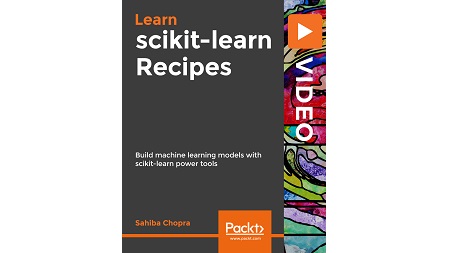
English | MP4 | AVC 1920×1080 | AAC 48KHz 2ch | 2h 06m | 499 MB
Practical recipes for powerful data analysis with scikit-learn
Scikit-learn is one of the most powerful packages that top data scientists prefer for machine learning. Powerful data analysis and machine learning require fast, accurate computations, and scikit-learn’s packages make building powerful machine learning models super-easy!
This course is targeted at those new to scikit-learn or with some basic knowledge. You will start with generating synthetic data for building a machine learning model, pre-process the data with scikit-learn, and build various supervised and unsupervised models. You will then deep-dive into implementing various optimization techniques like cross-validation, feature selection, regularization, and also dimensionality reduction techniques.
By the end of this course, you will be able to build your own machine learning models and take your data analysis skills to the next level!
Learn
- Explore the most-used applications of scikit-learn used by top data scientists from around the world
- Confidently use scikit-learn to build better machine learning models
- Deep dive into implementing deep learning with scikit learn using neural network for faster model building and data manipulation
- Learn to find the best model and analyze data faster with cross-validation techniques in scikit-learn
- Manipulate and visualize data effectively to enhance computing time for mathematical operations
- Explore the feed-forward neural networks available in scikit-learn for large datasets and better results
- Evaluate and fine-tune the performance of your model built-in scikit-learn
Table of Contents
Data Pre-Processing with scikit-learn
1 The Course Overview
2 Loading Data
3 Building Binary Features by Creating Thresholds
4 Imputing Missing Values Using sklearn Impute
5 Building Linear Model with Outliers
6 Putting It All Together with sklearn Pipelines
Dimensionality Reduction
7 Principal Components Analysis
8 t-SNE
9 Factor Analysis
10 Kernel PCA
Linear Models
11 Linear Regression without scikit-learn
12 Linear Regression with scikit-learn
13 Evaluating the Linear Regression Model
14 Logistic Regression
15 Evaluating the Logistic Regression Model
Support Vector Machines
16 Linear SVM
17 Optimizing Linear SVM
18 Multiclass Classification Using Consumer Complaints Data
Decision Trees and Ensembles
19 Decision Trees
20 Decision Tree Model Evaluation and Fine Tuning
21 Building a Random Forest Regressor
22 k-Nearest-Neighbor Model
23 Gradient Boosting
Clustering with scikit-learn
24 Clustering Data with k-means
25 Evaluating the Performance of the Model
26 Fine-Tuning the k-means Model
27 Detecting Outlier Using k-means Clustering
28 Gaussian Mixture Models for Variable Clustering
Cross-Validation
29 Introduction to Feature Selection
30 Hands-On Feature Selection
31 k-fold Cross-Validation
32 ShuffleSplit and Time Series Cross-Validation
33 L1 and L2 Norms
34 Grid Search
Neural Networks
35 Introduction to Neural Networks
36 Building a Perceptron Classifier
37 Multilayer Perceptron with scikit-learn
38 Stacking
Resolve the captcha to access the links!